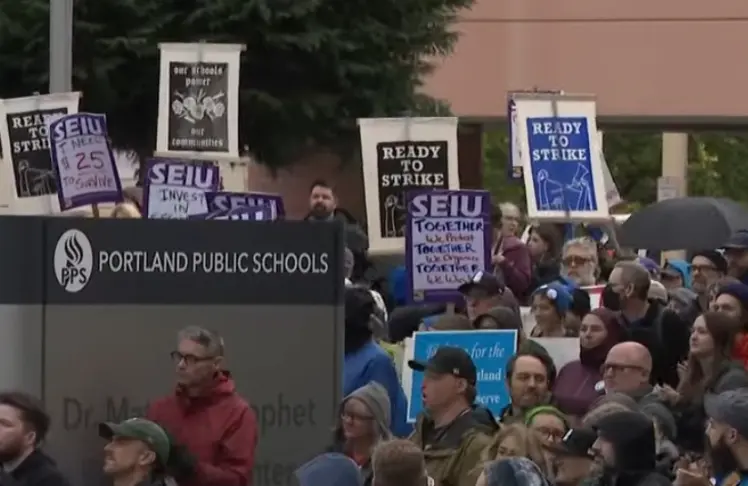
Portland, Oregon is currently facing a looming teachers’ strike. Portland Association of Teachers headquarters in Northeast Portland is gearing up with volunteers and signs. The prospect of educators taking to the streets in protest has parents feeling uneasy about the many issues that will arise should the teachers strike. The protest also highlights the deep-rooted issues within the education system and underscores the urgent need for addressing teachers’ concerns.
At the heart of the impending strike are teachers who are advocating for fair wages, improved working conditions, and increased resources for their classrooms. The two sides are at odds over pay, planning time and working conditions and remain at least $200 million apart. Educators argue that investing in teachers is tantamount to investing in the future of the community. They emphasize the importance of adequate funding, smaller class sizes, and access to essential resources to provide quality education to Portland’s students.
Oct. 17 is the deadline before the district is set to impose its last, best offer. This is also the date teachers can formally vote to strike. The clash between teacher demands and budgetary constraints has reached a critical juncture. No one knows how long the strike will be should there be one. The outcome of this strike could set a precedent, influencing how other regions address similar concerns and advocate for the well-being of both teachers and students.
As a teachers’ strike starts to look more likely, families are bracing for the impact of being out of school. The looming teachers’ strike raises concerns about the impact on students and their families. Disrupted school schedules, potential loss of extracurricular activities, and limited access to essential support services are just a few of the challenges students may face during a strike. Additionally, parents may need to make alternative arrangements for childcare, putting additional strain on families and the community.
Amidst the tension, there is a collective call for dialogue and resolution. Both educators and administrators acknowledge the need for open communication and collaboration to find common ground. Community leaders, parents, and stakeholders are urging all parties to engage in constructive conversations, emphasizing the importance of valuing teachers and investing in education as a whole. Negotiations between the district and its largest union have yielded little progress.













